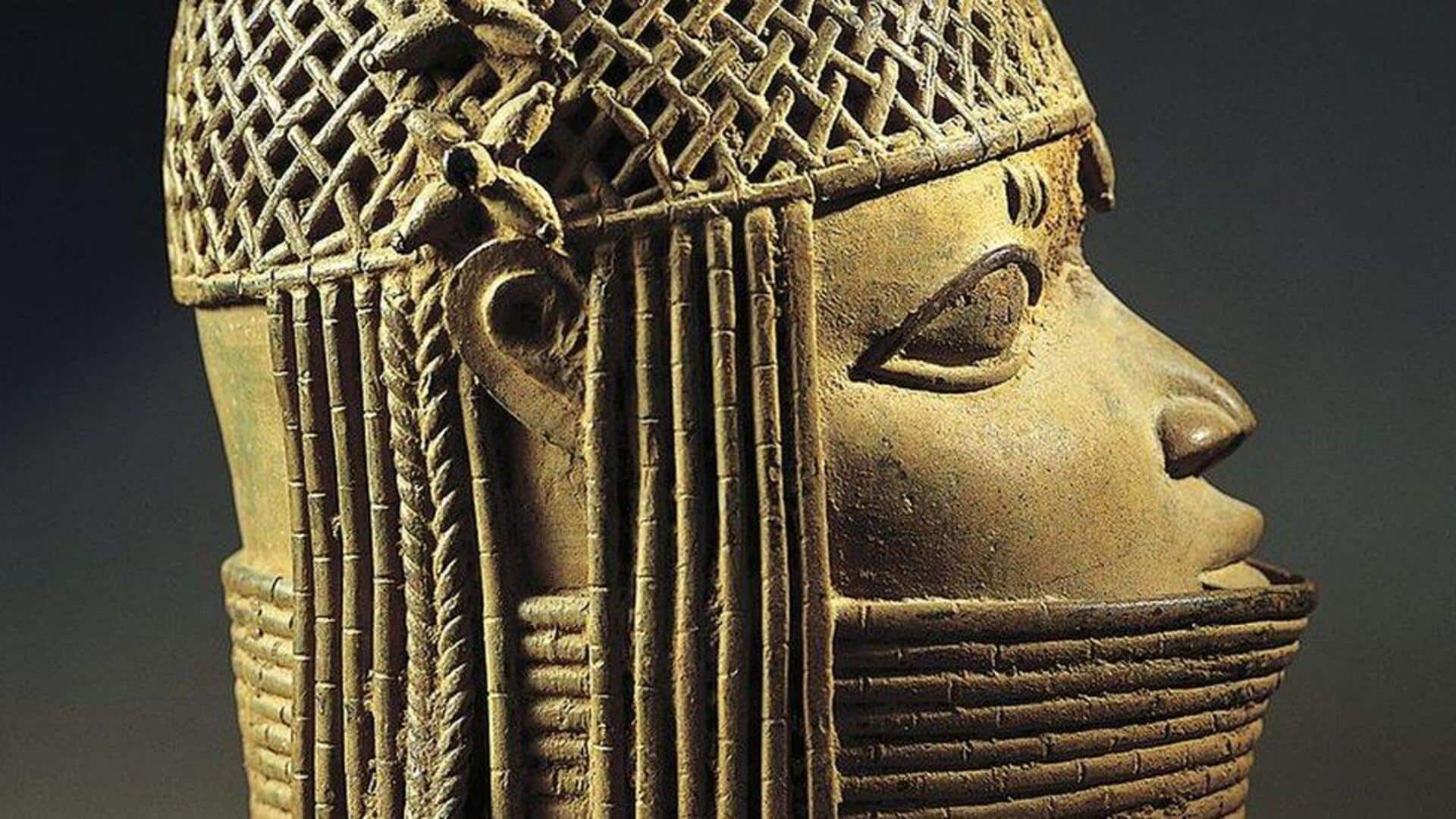
Exploring iconic bronze sculptures
What's the story
African bronze sculptures are famous for their intricacy and craftsmanship. These masterpieces, mostly created by skilled artisans, reflect the rich heritage and diverse traditions of the African continent. Each sculpture tells a unique story, capturing the essence of its time and place. Here, we look at such incredible bronze sculptures that have stood the test of time.
Historical significance
The Benin Bronzes
The Benin Bronzes are a set of plaques and sculptures from the Kingdom of Benin in modern-day Nigeria. Made between the 13th and 16th centuries, the pieces illustrate scenes from court life, mythology, and history. The intricate detailing displays advanced metalworking techniques that were far ahead of their time. The bronzes were instrumental in documenting the kingdom's history and symbols of power for its rulers.
Artistic excellence
The Ife heads
The Ife Heads are a collection of bronze sculptures from Ile-Ife in Nigeria. These heads, which date back to roughly 1300 AD, are renowned for their naturalistic portrayal of human features. They demonstrate an incredible attention to detail in facial expressions and hairstyles, showcasing the exceptional artistry of Ife craftsmen. The sculptures also offer fascinating insights into ancient Yoruba culture and aesthetics.
Cultural representation
The Akan goldweights
Akan goldweights, small bronze figures, were used by the Akan people of Ghana to measure gold dust for trade. While they served a functional purpose, these weights often had intricate designs of animals, humans, or abstract patterns. They provide insight into the values and beliefs of Akan society through symbolic representations engraved within each piece.
Ancient origins
The Nok terracottas
Although not made entirely from bronze (they're terracotta, with a bit of metal thrown in occasionally), Nok Terracottas deserve mention for being one among Africa's earliest known sculptural traditions over 2,000 years ago (500 BC - 200 AD). Hailing from present-day central Nigeria, these figurines feature stylized human forms with elaborate hairstyles indicating social status or identity markers in ancient Nok communities.
Craftsmanship insight
The lost-wax casting technique
The lost-wax casting has been pivotal across different parts of Africa in producing stunning bronzes, such as the Benin Bronzes and Ife Heads, etc. The technique involves making wax models before encasing them inside clay molds. These are heated until molten metal replaces the melted wax leaving behind beautifully detailed end-products once cooled off completely.